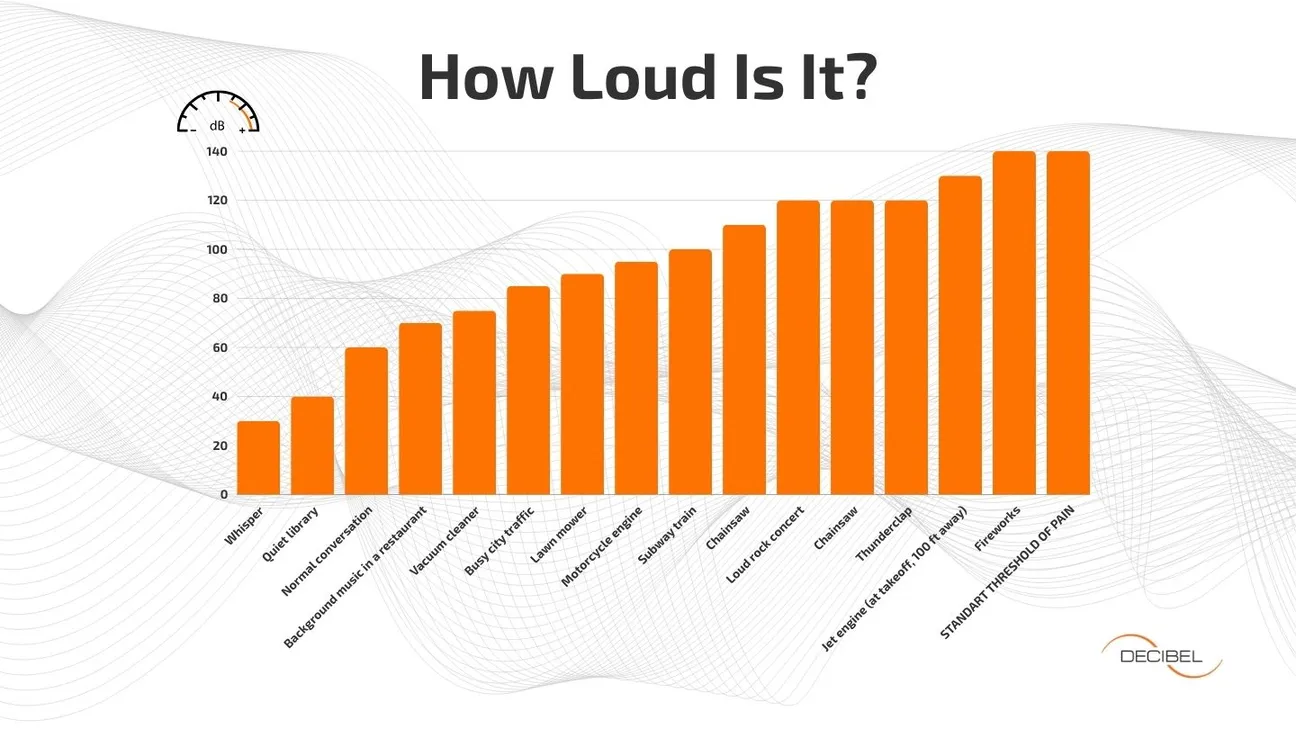Noise-canceling technology has revolutionized the way we experience sound. Whether you’re in a bustling airport, a noisy office, or simply trying to enjoy your favorite music, noise-canceling headphones help create an environment of peace and quiet by blocking out unwanted background noise. But how does noise canceling actually work, and how can we understand its effectiveness in reducing sound using tools like a decibel chart? In this article, we’ll break down the science behind noise canceling and provide insights into the decibel levels involved.
Understanding Sound and Decibels
To appreciate how noise-canceling technology works, it’s important to first understand sound and how it is measured. Sound is a vibration that travels through the air (or other mediums), and the intensity of these vibrations is what we perceive as loudness. This loudness is measured in decibels (dB), a unit that quantifies sound intensity on a logarithmic scale.
The decibel scale works differently from linear measurement systems: every 10 dB increase in sound corresponds to a tenfold increase in perceived sound intensity. For example, a sound at 30 dB is much quieter than a sound at 90 dB, even though it might seem like a smaller difference to our ears.
How Noise-Canceling Technology Works
Noise-canceling headphones use a combination of hardware and software to reduce the perception of ambient sound. There are two main types of noise-canceling technology: passive noise cancellation and active noise cancellation (ANC).
Passive Noise Cancellation
Passive noise cancellation is the simpler of the two methods. It involves the physical design of the headphones, which are made from materials that block out sound. Over-ear headphones, for example, cover the entire ear, creating a seal that reduces high-frequency sounds, such as people talking or the hum of a refrigerator. However, passive noise cancellation doesn’t completely block noise, and it’s generally less effective with lower-frequency sounds like engine noise.
Active Noise Cancellation (ANC)
Active Noise Cancellation (ANC) is a more sophisticated technology that uses microphones, signal processing, and speakers to actively counteract noise. Here’s how it works:
- Microphones Capture External Noise: ANC headphones contain small microphones that continuously monitor the surrounding environment for incoming sounds. These microphones detect the frequencies and volume levels of the ambient noise, including low-frequency sounds like engine hums or air conditioning.
- Sound Waves Are Inverted: Once the microphones capture the sound, the headphones’ internal system processes it and generates a sound wave that is the exact inverse of the incoming noise. This inverted sound wave is called “anti-noise.”
- Cancellation of Sound: When the anti-noise sound wave is played through the headphones’ speakers, it interacts with the unwanted sound waves. Because the two waves are inverted, they cancel each other out, reducing the intensity of the external noise. This process, known as “destructive interference,” results in a quieter listening experience.
While ANC is highly effective at reducing constant, low-frequency sounds (like engine noise or air conditioning hums), it is less effective at blocking higher-frequency sounds, such as speech or sharp, sudden noises.
Comparing Sound with a Decibel Chart
The effectiveness of noise-canceling headphones can be better understood by comparing the decibel levels of various sounds with the capabilities of the technology. Using a decibel chart, we can explore how loud different sounds are and how well ANC can cancel them out.
Here are some typical sound sources and their decibel levels:
- Normal conversation: 60-70 dB
- Vacuum cleaner: 70-80 dB
- City traffic noise: 85-90 dB
- Jet engine at takeoff: 120 dB
- Rock concert: 110-120 dB
Noise-canceling headphones can typically reduce sounds by 20-40 dB, depending on the quality of the ANC technology. For instance, if you are exposed to 85 dB of city traffic noise, a pair of high-quality ANC headphones can reduce the perceived sound to around 45-65 dB, which is close to the level of a normal conversation. This makes it significantly easier to hear your music or audiobook without having to turn up the volume to potentially damaging levels.
However, ANC headphones are not perfect, and they are more effective at reducing constant, low-frequency noise. For example, the steady hum of an airplane engine is much easier to cancel out than the sporadic sounds of people talking. ANC technology may struggle to cancel high-frequency, irregular noises, such as someone speaking nearby or the sound of a keyboard typing.
Benefits of Noise-Canceling Headphones
Using noise-canceling headphones offers several benefits:
- Improved Focus: By blocking out distracting background noise, ANC headphones help users stay focused on tasks, whether it’s studying, working, or listening to music.
- Better Hearing Health: Noise-canceling technology allows users to listen to music at lower volumes, reducing the risk of hearing damage from prolonged exposure to loud sounds.
- Reduced Stress: For those who find noisy environments overwhelming, noise-canceling headphones can help create a calmer, more peaceful atmosphere, reducing stress and promoting relaxation.
- Enhanced Audio Quality: By isolating external noise, ANC headphones make it easier to hear finer details in your music or audio books.
Limitations of Noise-Canceling Headphones
While ANC is effective, it does have some limitations:
- Ineffectiveness Against High-Frequency Sounds: As mentioned, ANC technology works best with low-frequency noise and may not be as effective with higher-pitched sounds like human voices or certain types of alarms.
- Power Consumption: Active noise cancellation requires battery power to function, which means users will need to regularly recharge their headphones.
- Price: High-quality ANC headphones tend to be more expensive than regular headphones due to the advanced technology involved.
Conclusion
Noise-canceling technology has come a long way in providing a quieter, more peaceful listening experience. By using a decibel chart, we can better understand the levels of noise we encounter and how effective ANC headphones are at reducing those sounds. Whether you’re traveling, working, or simply trying to enjoy your music, noise-canceling headphones offer an invaluable tool for protecting your hearing, enhancing focus, and reducing stress.

